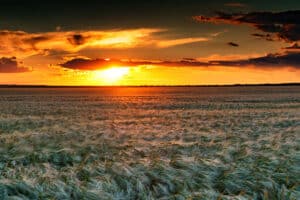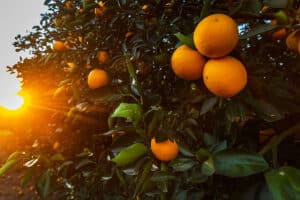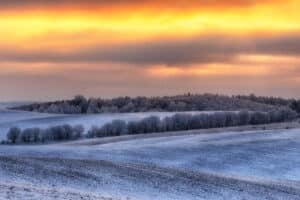We in Virginia’s mountains are in harvest, as are farm communities across much of the Northern Hemisphere.
Our four-day county fair celebrates our gatherings. On the first night, we shoot balls of paint at each other; second night, we bash into each other’s clunkers; third night, we match teenage boys with big belt buckles against bulls with big bull things; and on Saturday night we cheer trucks and tractors as they pull increasing amounts of dead weight down a meaningless track. Many find higher meaning — even metaphors for modern life — in each of these activities.
County fairs give everyone a chance to strut his or her stuff in front of friends, neighbors and enemies. The quality of what we produce is serious business. Self-esteem and reputation are locked into every hopeful Mason jar of pickled eggs.
Winners are not expected to show swelled heads in public, but a little gloating might happen on the ride home if you’re holding a blue ribbon. I base this statement exclusively on hearsay…and not on any first-hand experience with my wife who happened to take five blues and two reds in the seven classes she entered at the horse show and one more blue in the parade. (It’s a good thing I worked all that in, believe you me.)
I’ve always been drawn to the exhibits of misshapen vegetables, particularly the Jay Leno look-alikes on the potato table as well as the rumble over who raised the largest inedible zucchini, which comes down to whether you’re a pound person or a length person.
Fairs provide a break from the harvest. They’re an excuse to spend money foolishly and see people whose names you’ve forgotten. But mainly they provide an opportunity for comparison and ranking.
It’s easy to forget that harvests — not warehouses — supply our supermarkets. Food is grown anew each year, much of it in a spring-to-fall span. This is not obvious in the grocery aisles I frequent.
The traditional small-scale agriculture that gave rise to community fairs was packed with risks from weather, war, weeds and weevils.
Modern farming has eliminated much of this roll-of-the-dice aspect of producing food. Were it not so, we could not create the surpluses that allow society to function with 98 percent of us doing something other than chasing cows and cursing weeds.
Modern harvests depend on controlling the different environments in which agriculture occurs. Where rain is hit or miss, we irrigate. With market risk, we hedge. With politics, we lobby the appropriations process, tax code and regulatory agencies as well as anybody. These techniques have succeeded, but they come with costs and have had consequences that no one foresaw.
The movement to produce food locally for local markets uses an earlier supply-demand model. Products depend on the season and the harvest. These farms are small, not big. They don’t sell into the commodity markets; they sell directly to individuals. The cost of farm-to-market transportation is largely shifted to consumers. Rather than use chemicals to control harvest risks, they ask their customers to pay more for products. (www.localharvest.org)
The conventional model produces lots of relatively cheap food whose quality is a matter of current public debate. The local-harvest model produces a relatively small amount of expensive food whose quality depends on the practices of individual producers and processors.
Whichever model a farmer follows, Nature imposes discipline on its human partner. To get a harvest, you have to do certain things when those things need to be done. If you do them wrong or half-right, you get hammered. If you are lazy or procrastinate, you end up like the “sluggard” in Proverbs 6: 6-11 or Aesop’s grasshopper.
Few Americans today live off their own harvest, which is how most of us survived when the Constitution was being ratified. The need to produce the products that sustained us drove our people’s desire for acquiring land. Dirt of your own meant life.
Today, even farm families buy much of their food at supermarkets.
Survival 220 years ago depended on a harvest that each family had to make, save and stretch. Families had to live within their harvests. From the richest farmer to the poorest, everyone understood these values.
County fairs call up the memory of those harvests, but we have uncoupled ourselves from the discipline, thrift and make-do that they imposed. I don’t think we get them back in a jar of green tomato chow-chow even when it’s best in show.
Today, the closest thing most Americans have to a harvest is a long-term capital gain. Profit is the crop we hope for, not potatoes.
Every agricultural harvest has a dark side. With the exception of foods like dairy products, harvests kill the things gathered, the things we eat. Our civilization understood from its beginning that every shepherd slaughters his sheep.
We understood that we, too, were subject to the Grim Reaper — the skeleton with a scythe — who harvests us in wars, disease and even on the backyard deck if need be. Maybe this is why we mock death at our county fairs with paint-ball fights that are never fatal. Maybe we are trying to buy off the Grim Reaper by sacrificing our vehicles instead of ourselves.
The nicest aspect to every harvest is being finished. Every year, the day comes when the barn’s full of hay, the woodpile needs no more sticks and the cellar shelves are lined with the jars of August.
Like writing, it’s fun having the harvest done, not in doing it.
This content may not be used or reproduced in any manner whatsoever, in part or in whole, without written permission of LANDTHINK. Use of this content without permission is a violation of federal copyright law. The articles, posts, comments, opinions and information provided by LANDTHINK are for informational and research purposes only and DOES NOT substitute or coincide with the advice of an attorney, accountant, real estate broker or any other licensed real estate professional. LANDTHINK strongly advises visitors and readers to seek their own professional guidance and advice related to buying, investing in or selling real estate.









Nice article.these days things are to much dependence on supermarkets,commercialized industry….how nice it be if things were the way they were in the past,more people involved in producing ones own food,istead of so much dependence on these bic commercialized operations…from someone realizing its not how much money one makes,just wanting to live a more fruitful way of life!!Mike